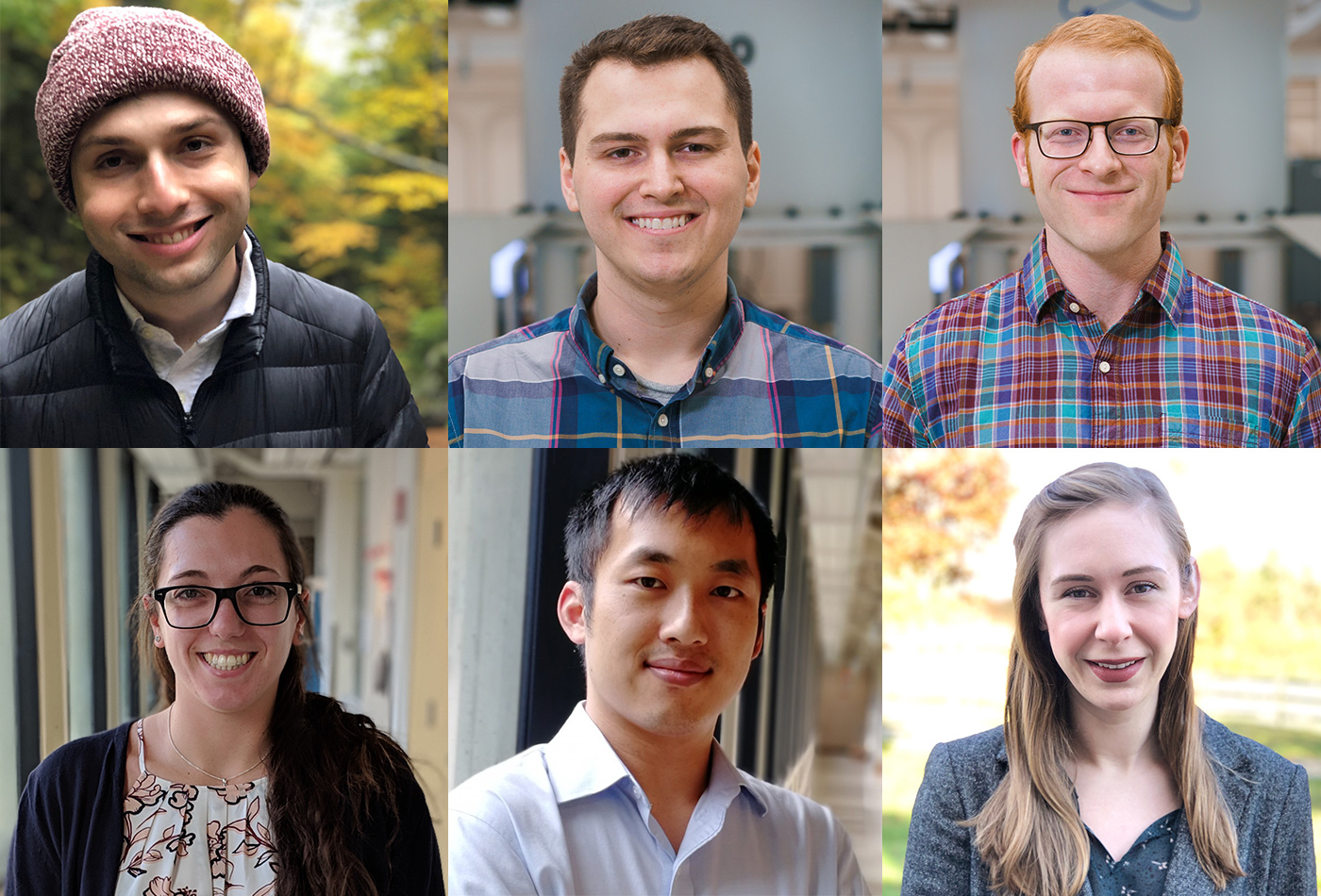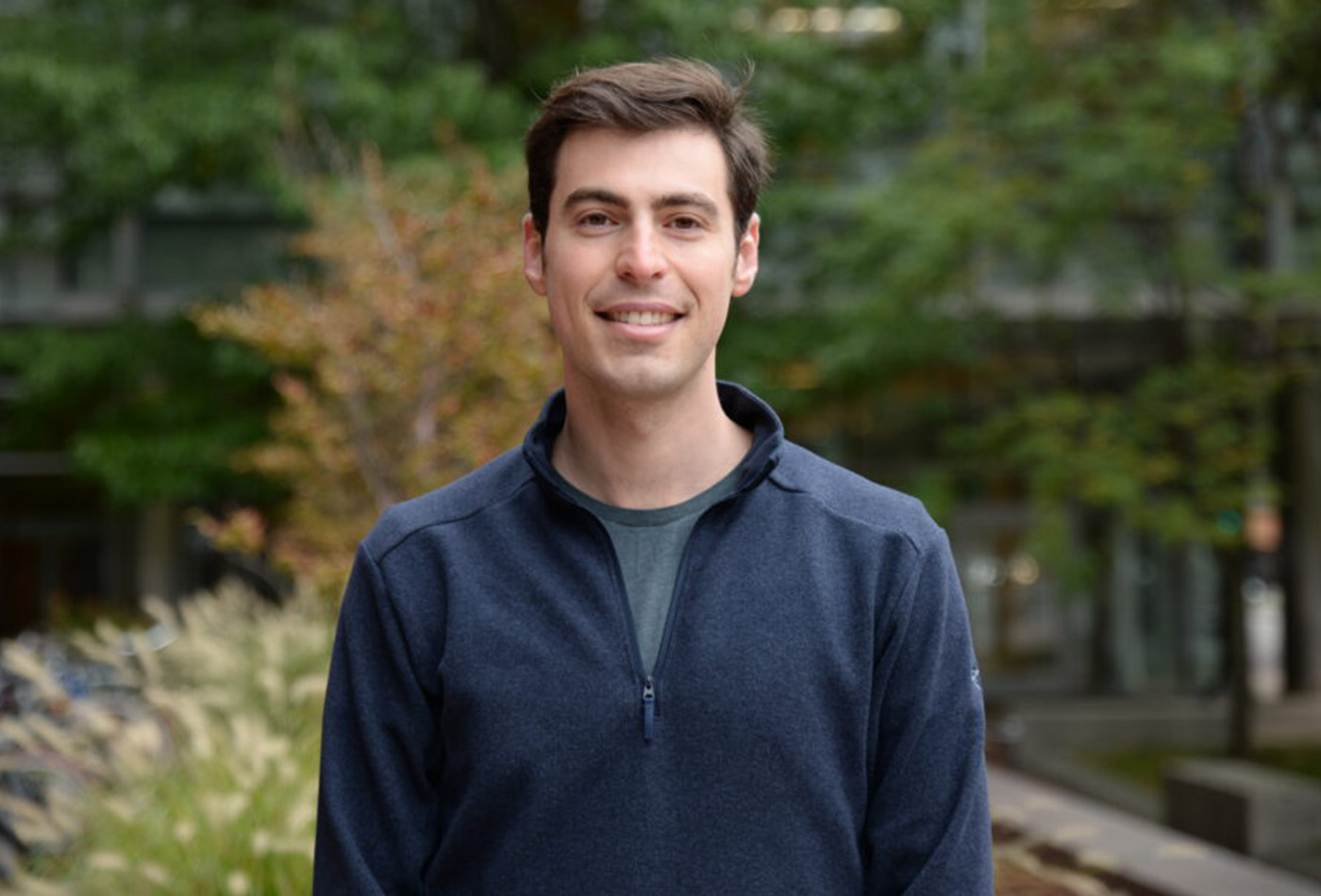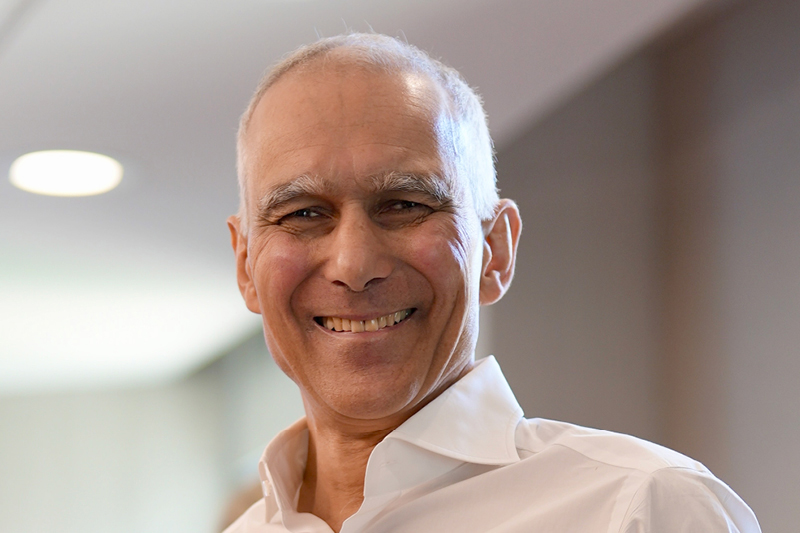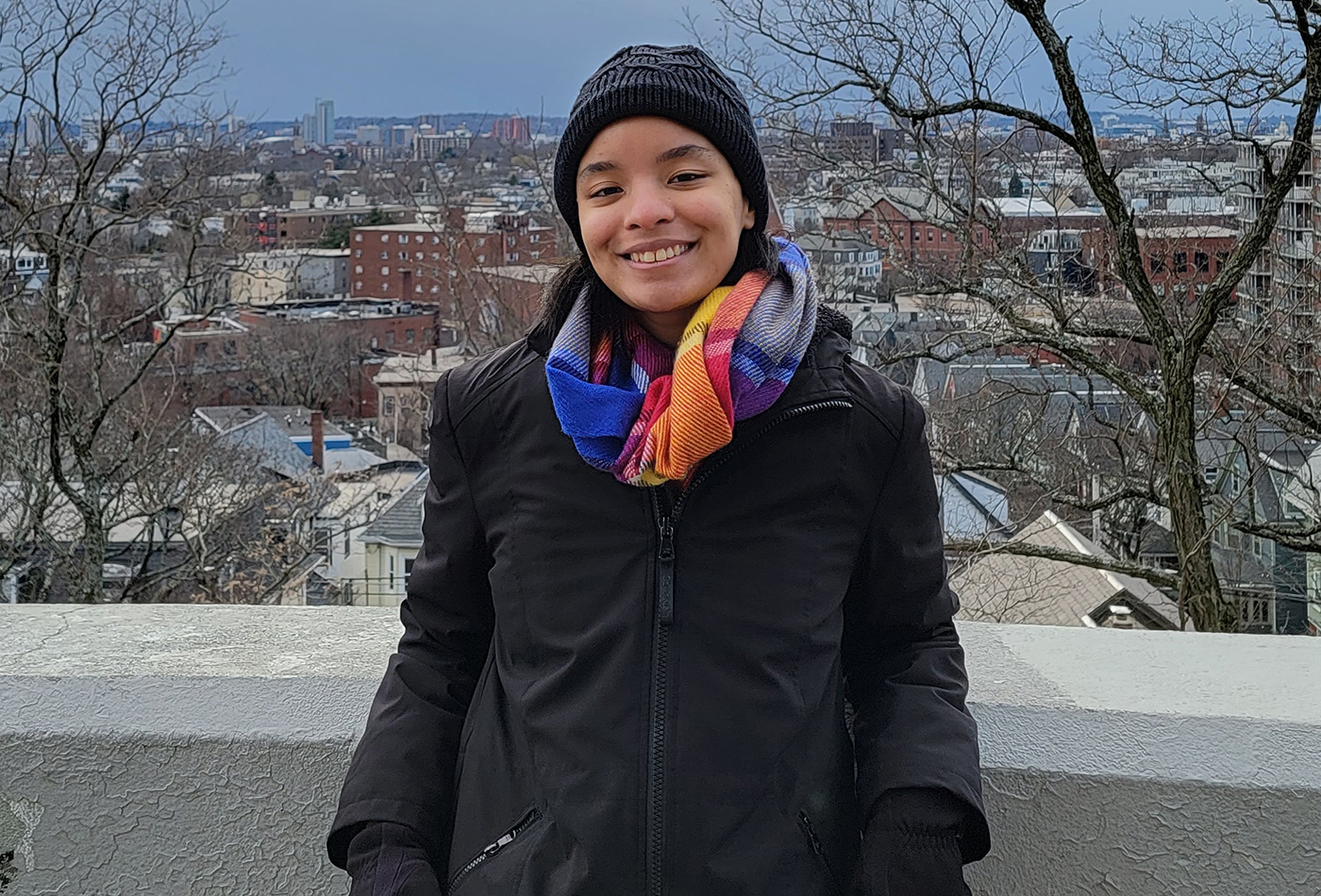Six members of the Chemistry Community receive inaugural Mentorship Spotlight Award
The winners were nominated by students, postdocs, faculty, and staff in recognition of their exceptional commitment to mentorship.
Six members of the Department of Chemistry community have been honored with the department’s inaugural Mentorship Spotlight Award. This award, which will be given semi annually, recognizes individuals who demonstrate exceptional commitment to fostering a positive working environment for those around them, leading by example, and generally demonstrating outstanding mentorship. Each winner will be presented with a prize in the form of a trophy and a monetary sum.
The winners of the Fall 2020 Mentorship Spotlight Award are:
Kyan D’Angelo
Graduate student Kyan D’Angelo’s dedication to personal and professional mentorship, as well as a commitment to Environmental Health and Safety, shone in his nomination for this award.
“I think being a helpful mentor is not only rewarding, but is a personal responsibility,” said D’Angelo. “Knowledgeable and experienced mentors were an important part of my own development as a chemist. I strive to be the same to others now, especially new coworkers, to promote a safe and inclusive environment.”
D’Angelo’s research in Professor Mohammad Movassaghi‘s group is focused on the synthesis of biologically-active natural products using novel synthetic strategies, in conjunction with detailed mechanistic studies.
Aurelio Dregni
Graduate student Aurelio Dregni’s nominations honored his dedication to mentoring colleagues through the swift adaptation of research for a remote setting, in addition to taking the newer members of the group under his wing during the unprecedented working conditions brought on by COVID-19.
“Research in a new lab can be very intimidating, and all of science can be very stressful,” said Dregni. “I value mentorship because I believe that giving others the opportunity to learn and also see that those around them have struggled at times helps to build a happier and healthier lab environment, where everyone can thrive. Finally, I have had amazing mentors in my life, and I want to pay it forward.”
In Professor Mei Hong‘s group, Dregni uses solid-state NMR spectroscopy to study the structure and dynamics of tau protein amyloid fibrils related to Alzheimer’s disease. Patients afflicted with Alzheimer’s disease and other neurodegenerative diseases have plaques of misfolded tau protein which spread throughout the brain and recruit healthy protein to the misfolded state. A better understanding of the molecular mechanisms of this protein misfolding will hopefully provide insights into ways to detect, treat, or even prevent these terrible diseases.
Martin Gelenter
Multiple nominations from his peers and colleagues proved graduate student Martin Gelenter’s dedication to serving as a strong mentor with a significant emphasis in diversity and inclusion.
“When I was a little kid I used to do ‘science experiences’ at home with my mom and dreamed of one day becoming a scientist,” said Gelenter. “Throughout my life I’ve had teachers, professors, and mentors that believed in me and my abilities even when I didn’t and fostered my love of science and trying to understand the world around us. Through teaching and mentoring others, I have learned that the only thing more rewarding than realizing my own potential is to mentor and teach others to believe in themselves, just as mentors have done for me.”
A member of Professor Mei Hong’s lab, Gelenter utilizes solid-state nuclear magnetic resonance spectroscopy to study the structure and function of proteins at atomic length scales. Glucagon is a peptide hormone, like insulin, that controls blood sugar levels and is prescribed for severe hypoglycemia. One area of his research has been to solve the high-resolution structure of unwanted fibrils that form within hours of preparing pharmaceutical glucagon, which make it difficult and expensive to use. With this structure, he has designed glucagon analogs that inhibit fibril formation and have promise to one day be used as a pharmaceutical for blood sugar regulation. Another area of Gelenter’s research has focused on understanding how the influenza M2 proton channel functions, which is necessary for viral replication. By better understanding how this protein functions and how it interacts with water and antiviral drugs, the group’s research can help guide medicinal chemists in designing antivirals to block the activity of this protein and thus treat individuals infected with the influenza virus.
Victoria Marando
Graduate student Victoria Marando exemplified the meaning of mentorship by proactively including new group members, and, in the face of the pandemic, ensuring that research work would still be possible for them.
“I am motivated by the mentorship that I have received from many people throughout my scientific career,” said Marando. “I have also been fortunate to work with passionate and enthusiastic students who are a constant source of inspiration and motivation.”
Marando’s research in Professor Laura Kiessling‘s lab focuses on synthesizing and evaluating compounds with new mechanisms that can be used to better understand, diagnose and treat tuberculosis infection. Specifically, she aims to leverage biosynthetic enzyme activity to probe Mtb cell wall assembly using small molecules to perturb both polysaccharide structures and assembly enzymes themselves.
Peyton Shieh
Postdoctoral researcher Peyton Shieh’s peers and colleagues revealed his dedication to providing a positive example, both personally and professionally.
“I have benefitted from great mentors in the past – the individuals who believed in my potential and went out of their way to give me opportunities or advice at critical junctures,” said Shieh. “I am incredibly grateful for their generosity, and I hope to pay this forward to the next generation of scientists.”
In Professor Jeremiah Johnson‘s research group, Shieh is developing better ways to build and break down synthetic polymers, applying these techniques to address longstanding challenges across biomedicine and sustainability. His broader interests lie at the interface of biological systems and synthetic materials. Shieh takes inspiration from how chemical biologists and biotechnologists have revolutionized how we study, characterize, and engineer biopolymers. His hope is to leverage analogous approaches to shine light on the interactions between synthetic materials and living systems.
Emily Zygiel
Graduate student Emily Zygiel has committed significant time and effort to serving as a mentor to both a UROP and fellow graduate students in her research group, and continuously demonstrates extreme generosity with her time.
“I’ve found my mentorship opportunities at MIT so rewarding, and I’ve been lucky to work with such talented undergraduates and fellow graduate students,” said Zygiel. “When I was a first year graduate student, my mentor quickly understood that I was a visual learner, and started drawing out experimental plans rather than verbally explaining them to me. I was so grateful for this, and this experience motivated me to teach by listening and learning about how another person learns.”
A member of Professor Elizabeth Nolan‘s research group, Zygiel studies the strategies used by the innate immune system to combat microbial infection, and how microbial pathogens resist these immune mechanisms. In particular, she has focused on how calprotectin, a metal-sequestering innate immune protein, impacts infections caused by the pathogens Staphylococcus aureus and Pseudomonas aeruginosa. Zygiel has found that calprotectin starves these bacterial pathogens of iron, an essential nutrient, which in turn affects their growth and virulence.





